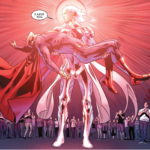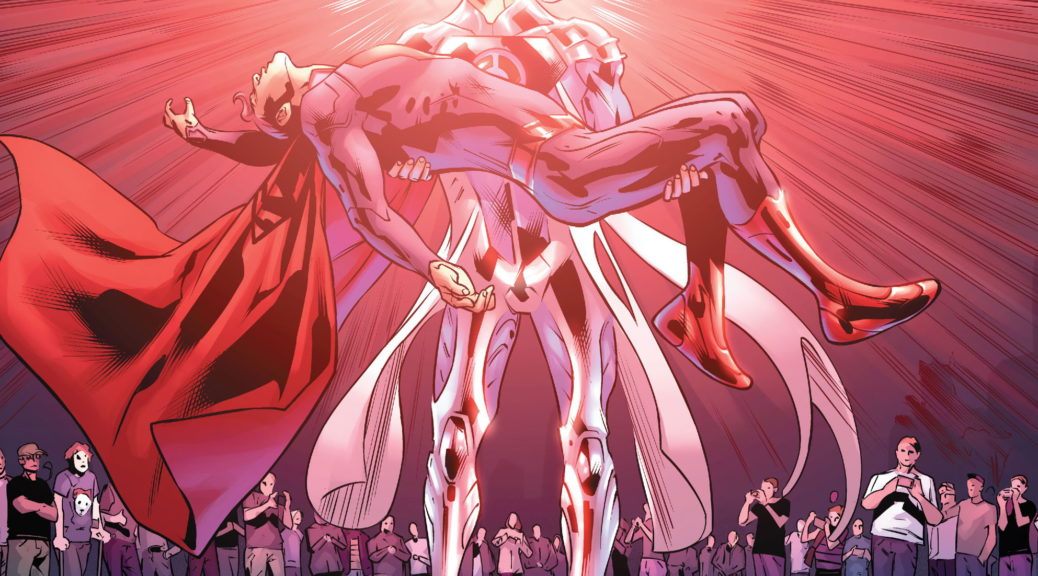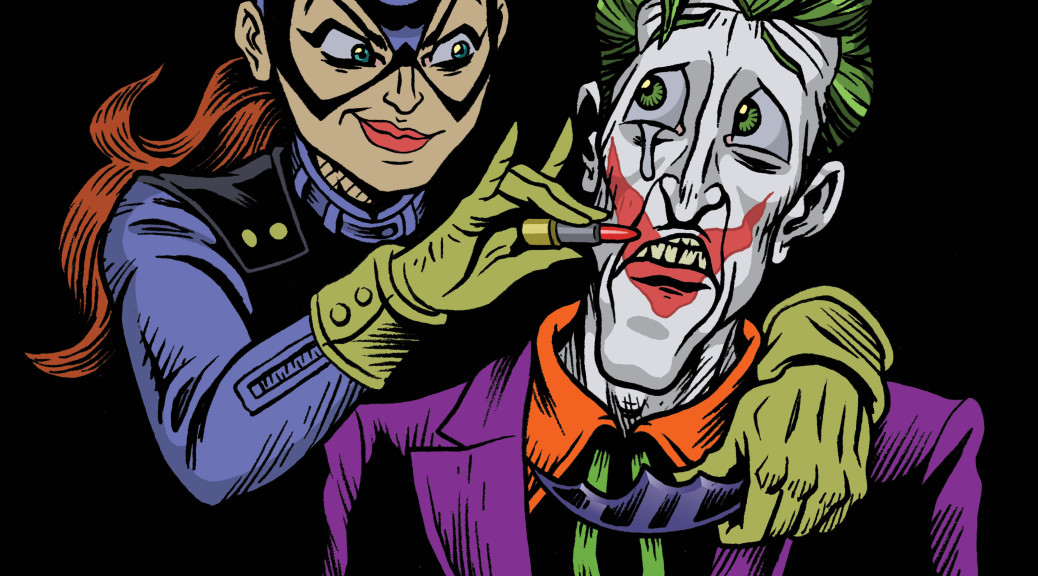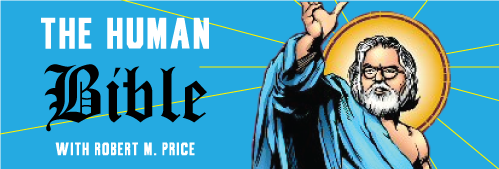 A multitude of issues pertaining to religion and comics have filled the media and the Sacred and Sequential site in 2016: Islamophobia, superhero gods, idolatry and blasphemy, proselytizing, memorializing. Below are the five most-read articles from our pages; in toto, they all seem to orbit concerns of the medium’s essential alignment with either Christianity, Judaism, or the far, far more esoteric. Is there battle for the “soul” of comics amassing?
A multitude of issues pertaining to religion and comics have filled the media and the Sacred and Sequential site in 2016: Islamophobia, superhero gods, idolatry and blasphemy, proselytizing, memorializing. Below are the five most-read articles from our pages; in toto, they all seem to orbit concerns of the medium’s essential alignment with either Christianity, Judaism, or the far, far more esoteric. Is there battle for the “soul” of comics amassing?
5. Four-Color Christ Jesus
10/31: Ron Edwards of Comics Madness penned this birthday reflection on Jesus, comics, Jack T. Chick, and The Cross and the Switchblade (along with eye-opening comments from his readers).
4. Jack T. Chick dies at 92
10/25: Jack T. Chick likewise headlines this post by Martin Lund, who explores the difficulty of Chick’s impact and legacy.
3. Jews and Comics: The Decade in Review
2/2: The Jewish Comics Blog‘s Steven Bergson addresses the flaws in religion & comics reportage, particularly by a January Haartez article.
2. Questioning Frank Miller and Superman’s “Jewish Essence”
10/13: Lund approaches the “Judaism and comics” issue from a new perspective, this time triggered by Frank Miller’s comments to CBR.com.
1. Sacred Texts: Lovecraft, Alan Moore, and Religion in Providence
2/9: Bobby Derie of Facts in the Case of Providence gives S&S readers a tour of Alan Moore’s latest (and last?) comics series along with its deep linkages to the study of religion.

 A multitude of issues pertaining to religion and comics have filled the media and the Sacred and Sequential site in 2016: Islamophobia, superhero gods, idolatry and blasphemy, proselytizing, memorializing. Below are the five most-read articles from our pages; in toto, they all seem to orbit concerns of the medium’s essential alignment with either Christianity, Judaism, or the far, far more esoteric. Is there battle for the “soul” of comics amassing?
A multitude of issues pertaining to religion and comics have filled the media and the Sacred and Sequential site in 2016: Islamophobia, superhero gods, idolatry and blasphemy, proselytizing, memorializing. Below are the five most-read articles from our pages; in toto, they all seem to orbit concerns of the medium’s essential alignment with either Christianity, Judaism, or the far, far more esoteric. Is there battle for the “soul” of comics amassing?


